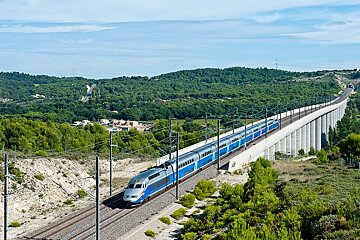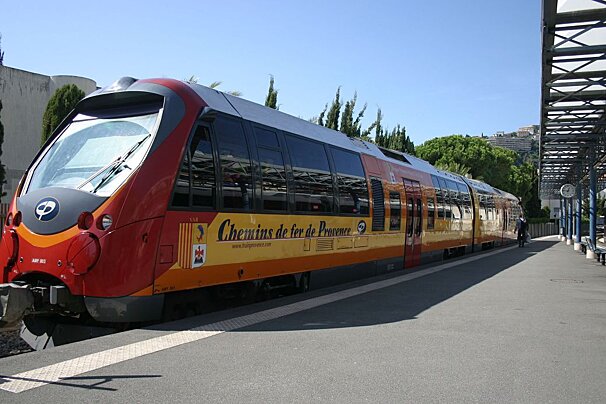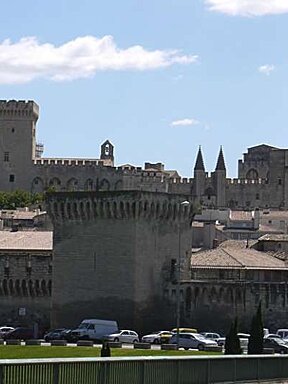

© railCC
How to Get to Provence
Discover the top ways to get to Provence
If you're not taking a package holiday, where travel to your resort is already catered for, then you might want to consider how you're going to get to France and Provence.
With the advent of DIY travel and travel websites, it's easy to check public transport options and timetables in most European countries, and there are plenty of companies offering direct transfer services to and from airports. Our guide gives you an idea of the options available, plus some tips on travelling with your sporting equipment.
Easiest way to get to Provence
This is a tricky question for the Provence as much depends on the type of holiday you are looking for. Provence is well known for it's vineyard tours, historical towns and villages and of course walking and cycling holidays. Whilst flying is undoubtedly the quickest and possibly even the most cost effective way of reaching Provence. Once you are there it is quite definitely easier to have your own transport.
So flying and car hire could be the best option for some. Alternatively though the Auto Train is an ideal way to begin your holiday in a relaxed manner and to arrive at your destination feeling refreshed and ready to tackle the Provencal countryside in your own car.
If you are bringing a bike with you and intend to do some cycle touring then train again is a great option.
Whatever you decide, be aware that without taking part in pre-arranged tours and excursions it is difficult to use public transport to reach many of the areas frequented by tourists.
Airports
The two main airports in Provence are Avignon and Nimes and then down on the coast you will find the main international hub of Marseille. All three offer good access to the Provence region, depending on your plans or itinerary when you get there. Flights to and from Marseille may be more frequent as it is a main international airport, however, discovering Provence from here is likely to do be done by hire car.
If you prefer to have a holiday with perhaps a two-city approach then both Avignon and Nimes are perfect for that - flying into one and out of the other would work well. Plus the benefit of having a good train service between the cities.
For exploring the areas to the east of Provence, Marseille is the obvious option, allowing good transport links to Aix-en-Provence and up towards the Luberon and Verdon areas.
Flying to Provence
Flying to and around Europe is the most popular way to travel and in most cases budget airlines fly to airports conveniently close to holiday hotspots. Ryanair flies direct from Liverpool and London Luton to Nimes Garons airport, offering UK customers a convenient journey to the south west of Provence. Air France and British Airways both fly into Avignon airport but most flights are via Paris. Have a look at our flight finder to help your planning.
Flying is certainly the quickest way to travel to and from Provence, and being a popular holiday destination it is also easy to arrange your onward travel to your accommodation. You can take public transport (bus or train) from the airport or use one of the specialist companies who offer airport transfers. For the best deals on airport transfers see our favourite transfer companies. Many hotels will also offer an airport pick-up service so it is best to enquire about this directly before you travel. And lastly there is the option to hire a car from the airport.
Although flying is the quickest way to travel, do look out for hidden charges for bringing extra luggage and sports equipment with you.
Train to Provence
It's surprisingly easy, quick and comfortable to travel overland by train...from and to just about anywhere. Especially between some of the major European cities. Most of these journeys will start in Paris and the Eurostar service from London makes this an easy option. Journey time from Paris to Avignon is around 3 to 3h30.
Avignon is also served by the Auto Train service where you deposit your car on the train and take a comfortable seat in the carriage to your destination. Perfect to cut out the long journey from Paris but giving you the convenience of your own transport to explore Provence. Check out our National Trains guide for more information.
Driving to Provence
If you are planning on spending a long time in Provence then driving out could be a good option. You will be able to bring far more home comforts with you than your standard baggage allowance will accept.
The other advantage to having a car is flexibility. Although Provence has a good public transport system in the main towns and cities, it does not often take you to those special hillside villages, vineyards and lavender fields that are the reason most people visit the region. Being able to drive yourself around the area is far more comfortable and convenient, allowing you to take day trips, visit areas of special interest, towns and villages.
You should bear in mind that you will probably be using the main toll roads as you drive through France and this may take much longer if you chose to travel on a busy Saturday during the summer, or encounter difficult weather conditions. You will most certainly have one ferry crossing to get to Provence if you are planning on driving from the UK. Then of course you have roughly a 9-10 hour drive from the ferry port of Calais down to Provence's main city of Avignon. Fuel cost will be roughly around €90-120 and you will need to budget an additional €80-100 in toll costs.
When driving through France you will need to carry a high visibility vest and a warning triangle at all times. To keep your car legal whilst it is France you will need to have insurance that covers you for more than the usual 90 days. This can make your insurance a little more expensive but it does mean you are covered against any damage caused.
For more information on driving and getting here by road, take a look at our Driving to Provence guide.
Coach to Provence
There are a number of companies that offer a long-distance coach service from various pick-up points in the UK and throughout Europe. The coaches are usually more comfortable than your average coach and many travel through the night, allowing you to spend more time on your actual holiday.
Although the journey time is obviously longer, you don't have the usual airport hassle of checking in luggage and hanging around in the departures lounge waiting for your flight to board. It is also more eco-friendly and often a bit gentler on the pocket.
Some of the main European coach companies include Eurolines, Ouibus and National Express.
Ferries to Provence
Any car trip from the UK will inevitable involve a ferry. Regular ferries from the UK to France mean that prices are competitive, and the EuroTunnel provides a super-quick and easy passage from the UK to mainland Europe. It is worth checking availability in advance as they can become busy during peak holiday times, can be expensive if left to the last minute and in some cases may only operate on certain days. You may well need to base your entire trip around the ferry times.
As a rough guide, crossing times from the UK to France are as follows: Portsmouth to Caen is under six hours, Portsmouth to St Malo is just under 11 hours, Portsmouth to Cherbourg takes just three hours, Portsmouth to Le Havre is 3h45. Dover to Dunkirk is around two hours, Dover to Calais is just 90 minutes.
Bringing your skis, snowboard or bike to Provence
Airlines, trains and transfer companies are all well-versed in catering for customers who travel with their own sports equipment (eg bikes/golf clubs in the summer), but it’s well worth checking the details in advance. Each company will have their own individual policy terms and conditions depending on the type of sporting equipment you are transporting. Here's a snapshot of the different transport options and a guide to their restrictions:
By plane:
Some airlines charge for taking equipment, and some don’t, and this can also apply to bikes, golf clubs, parachutes, mountaineering equipment - so check before you book. Make sure you pack your gear well, as it’s not unusual for there to be a few bumps and bruises along the way, if you don’t! The same applies for your bike, whether that be a mountain bike, road bike or touring bike...pack it well and ensure it falls within the packaging guidelines specified by the carrier. For more information see our Cycling and Mountain Biking guides.
Airport transfer companies - It’s always important to let them know exactly what you’re bringing, so that they can ensure having sufficient capacity for bikes/golf clubs etc. An eight-seater minibus is much more cramped if all eight of you turn up with skis without having forewarned the driver!
By train
Depending on where you start from, remember that train travel might include a couple of changes and almost certainly lugging your gear up and down a few sets of stairs or escalators. Eurostar allows as one of your two permitted pieces of larger luggage, however golf clubs, bikes and other sporting equipment incur an additional charge of around £30 for their registered luggage service.























